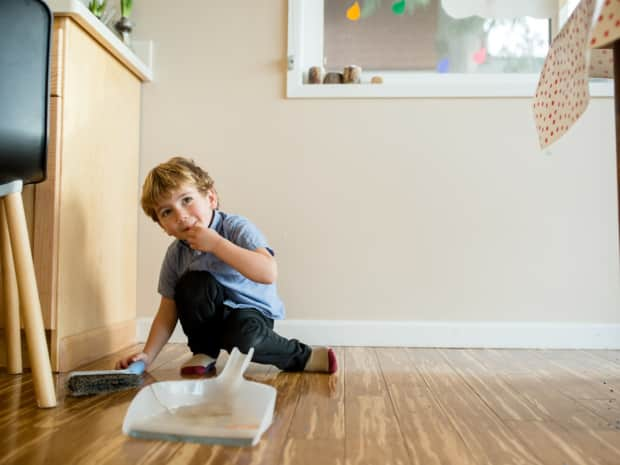
How to clean bamboo floors for a natural shine.
Bamboo floors are durable but not indestructible — cleaning them the wrong way could end in disaster. Here’s how to clean bamboo floors the right way.
Read More
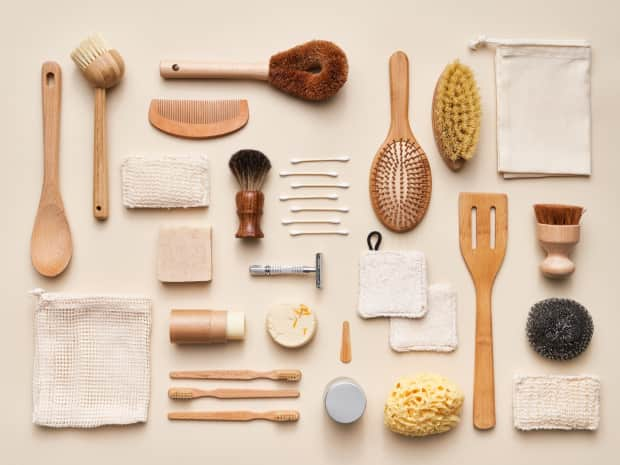
Last Updated: April 1, 2022
Is bamboo an eco-friendly alternative to tree paper products, and is it actually sustainable? We had the experts weigh in and pull together the best bamboo-based products.
Bamboo is a popular alternative to tree paper, wood, plastic, and other materials, but is it sustainable — and should you make the switch to bamboo paper and other bamboo-based products? To help us see the forest for the trees is Shelley Vinyard, co-author of The Issue with Tissue 2.0: How the Tree-to-Toilet Pipeline Fuels Our Climate Crisis, a Natural Resources Defense Council (NRDC) publication. We discover whether bamboo actually is sustainable, delve into bamboo toilet paper versus alternatives, and highlight other eco-friendly products crafted from this versatile material.
Bamboo seems to have crept its way into various industries and products, with everything from bamboo clothing to sheets to paper cropping up across different retailers. Bamboo is marketed as an eco-friendly material largely because the plant grows lightning-fast — up to 35 inches per day and 1.5 inches per hour — doesn’t require fertilizer, and self-regenerates from its own root system, so no replanting is required.
So it's all upsides for bamboo, right? Not necessarily. While there was a long-term belief that bamboo was able to absorb carbon dioxide and produce 35% more oxygen than trees of a similar size, a 2016 study found that bamboo may actually emit carbon dioxide, calling its eco-friendliness into question (although other experts disagree with the findings). There are also other factors to take into account when weighing bamboo's sustainability, such as the environmental impact of shipping bamboo or the chemicals used in the production processes for certain items like clothing and textiles.
Still, transitioning to bamboo products can have its share of upsides, especially when comparing bamboo products like toilet paper against conventional tree-based alternatives.
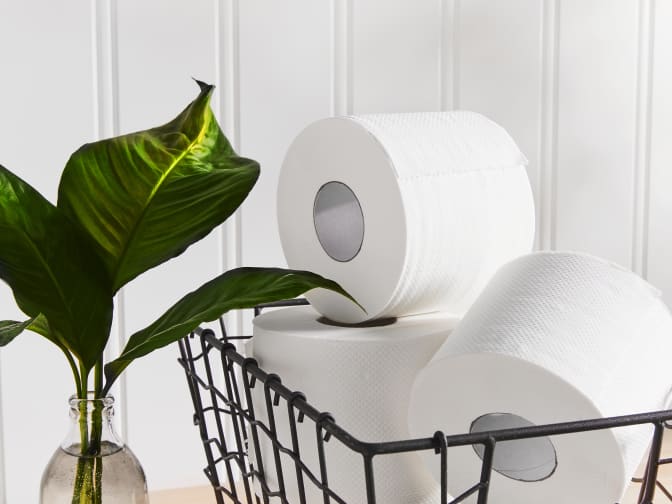
Products that are 100 percent bamboo are biodegradable — but that’s not the only reason bamboo paper products are better for the environment than those made from trees.
Most of the toilet paper used in the U.S. isn’t sustainable or recycled — it’s made with virgin wood pulp from the Canadian boreal forest. And with the average American using over 140 rolls of TP a year, that’s a lot of trees getting flushed down the toilet.
“Bamboo tissue products produce 30 percent fewer greenhouse gas emissions than tissue products made from 100 percent virgin forest fiber,” Shelley Vinyard says. This is especially problematic when we look at some of the companies behind the big names in traditional toilet paper.
“P&G, Kimberly-Clark, and Georgia-Pacific all continue to make their household tissue products from 100 percent virgin forest fiber and have not incorporated any recycled or sustainable alternative fibers into these products,” says Vinyard.
To make toilet paper, bamboo stalks are broken down into fibers. The fibers are added to a treatment that turns them into a pulp, which is then soaked, pressed, and turned into rolls of toilet paper. Voila!
Bamboo is safe for septic tanks and sewers because it’s a type of grass. Since bamboo is a natural material, it’ll dissolve in water quickly and naturally, leaving nothing behind to jack up your septic tank.
Grove Tip
Bidets are more eco-friendly and are gaining popularity in the U.S. at long last. “Bidets are a great alternative to using tissue products,” says Vinyard. “In fact, bidets require less water per use than the tissue-making process does.”
The Grove Co. tree-free line of everyday products (including toilet paper) is made from 100 percent, fast-growing bamboo fibers. Our bamboo is responsibly grown on family farms in China without the use of fertilizers or pesticides, and unlike other harvested bamboo, the bamboo sourced for the Grove Co. line of paper products is not a source of food for panda bears.
Grove also partners with the Arbor Day Foundation to replant forests across the U.S. That’s right: With every purchase of a Grove Co. paper product, you help replant American forestland.
You can choose from 3-ply tree-free toilet paper for added plushness and comfort, durable 2-ply paper towels in a roll that lasts twice as long as a traditional alternative, or our soft and absorbent 1-ply napkins or 3-ply tissues.
Bamboo is a super-versatile crop that’s used to make everything from sustainable toothbrushes to bamboo linen duvet covers, compostable bandaids, flooring, and kitchen utensils — and even bamboo clothing.
Switching to bamboo made goods can be an easy swap to reduce plastic in your home and transition to more sustainable, eco-friendly options. Plus, 100-percent bamboo products (like bamboo plates and cutlery) can often be composted, and even partial bamboo products (like toothbrushes) can likely be sent for commercial composting once the non-bamboo portion has been removed.
Want to see more bamboo? Check out Grove customers' favorite bamboo products, or the best eco-friendly plates and silverware made from bamboo.
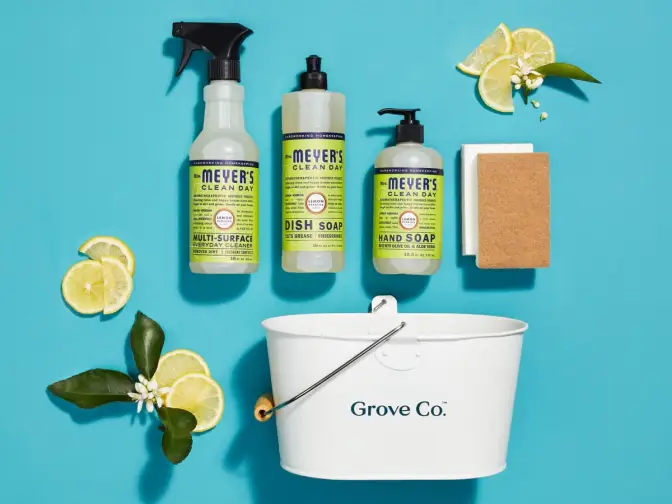
Wondering who Grove is, what types of products we offer, and how to get a free gift set when you sign up? Learn more about flexible monthly shipments, customizing your shipment, and joining millions of happy households — no monthly fees or commitments required.

Bamboo floors are durable but not indestructible — cleaning them the wrong way could end in disaster. Here’s how to clean bamboo floors the right way.
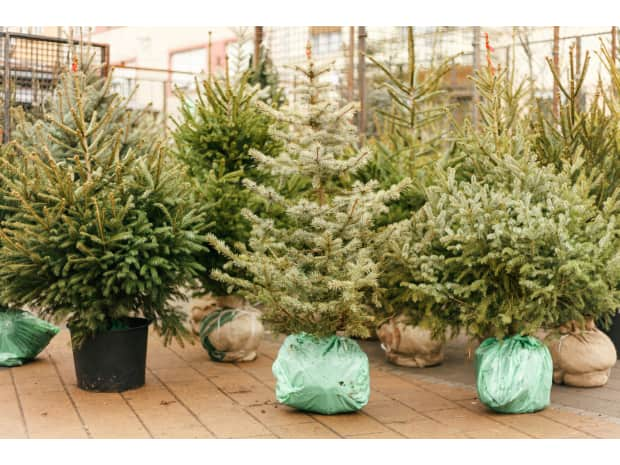
If this is your first time buying a real tree or you’re just wondering how to get rid of your annual tree in a way that’s better for the environment, here is a handy guide.

Here’s how to go plastic free if you're just getting started — and how to level up if you're ready to make a plastic-free commitment.
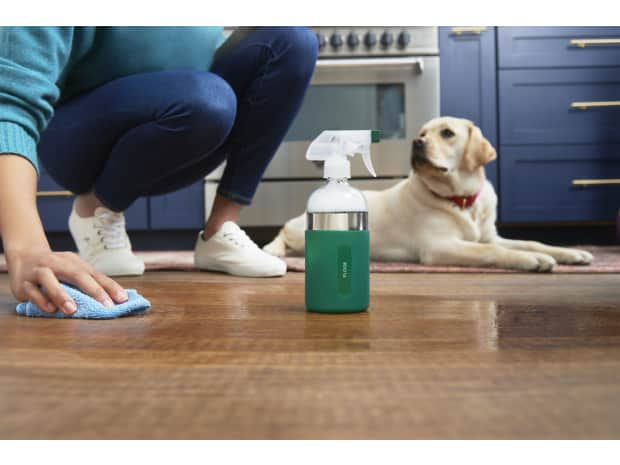
Make better choices when shopping for food, beauty, and cleaning products by learning about greenwashing and the steps you can take to actively avoid it from Grove Sustainability Expert Alexandra Bede.